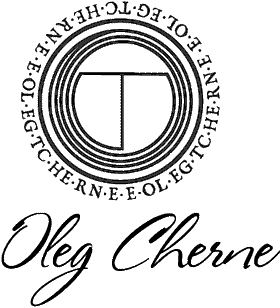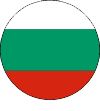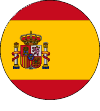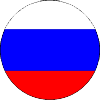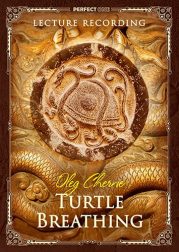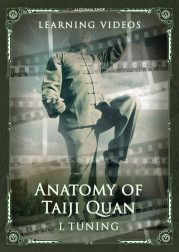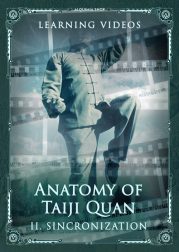Elixirs in Internal Alchemy (neidan)
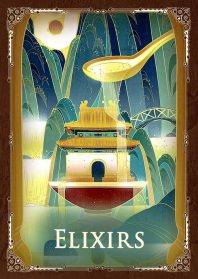
The list of elixirs used and obtained in internal alchemy (Nei Dan, 內丹, internal elixir, cinnabar) is quite large. Moreover, elixirs can be both external and internal. The most famous animate elixir bearers are the tortoise, the stork and the bat, which symbolize immortality in Daoism.
The very process of obtaining the elixir (as well as, in fact, its use) is an alchemical process, correlated with the idea of metal transmutation, which is associated with a certain effort and certain properties. The process itself is not associated with a particular metal, but rather with particular properties. Its implementation relies on the spiritual properties of the energy received, and the use and cultivation of better ingredients (associated with the vapours produced during smelting).
Vapours are also conceptualized as light, and the highest quality achieved through the alchemical process is associated with gold. However, gold is not the adept’s only goal. At the beginning and even in the middle of the path, the alchemical process involves other, lower-quality ingredients, which are vital to the alchemical process. This is also associated with the idea of the philosopher’s stone, which represents the whole spectrum of minerals and even processes that are important for the cultivation of mercurial consciousness, which transcends the limits of lower human nature.
At different stages of the path, the adept works with gold, cadmium, sulphur, and silver, which also need to be brought to perfection. Each of these metals is associated with a specific gilding or pigmenting process.
The search for the golden pill is a complex process that relies on one’s consciousness. Although cinnabar can be obtained without a prepared consciousness, it cannot be placed in the alchemical fire, which means that the adept cannot purify the impurities or obtain mercury.
Moreover, mercury is in fact obtained in one of the furnaces. Note that there are several types of mercury (three main kinds), the main one being the alchemical mercury, which is obtained in the higher furnace. This type of mercury is also called spiritualized mercury, and is characterised by energy quality that triggers the regeneration of the human body – this is where the practical path to immortality begins. Note however that first we need to cultivate the elixir and create the conditions for its absorption, that is, we need to carry out the primary transformation.
The elixir should start transforming inside the body. If the elixir simply saturates the body, it is considered a small elixir. On the other hand, the large elixir is an elixir that can enhance the whole process. The general cultivation of the elixir is associated with the idea of combining mercury and sulphur (obtaining pure mercury), which leads to the cultivation of a new substance (or rather, three substances) based on mercury, sulphur and their compound (more often referred to as cinnabar).
This makes the elixir a system with three distinct functions, associated with three types of tension. Meanwhile, alchemy deals with the knowledge and practice, which allow you to obtain alchemical luminosity or alchemical gold. The cultivation of the elixir is based on the ingredient associated with fermentation. For an outsider and a non-practitioner, this seems like obtaining the white or yellow light, which resembles silver and gold.
Let us now study the difference between external alchemy, i.e. that which can be consumed as an elixir from outside the body, and physiological alchemy, associated with processes occurring inside the adept’s own body. The difference between these approaches is significant, even though they deal with similar mineral elements, and it lies in the three primary vital energies and activities influencing the work of the elixir: mercury, lead or cinnabar. Here, mercury refers to the property, lead – to the condition, and cinnabar – to the process. It is the cinnabar process that contributes to the crystallization of the efforts in alchemy.
What is important in alchemy is that the use of the elixir is both linked to its absorption and to obtaining internal change. This makes the body of the adept light and frees it from the force of gravity, at the very beginning, at the level of the essence. This is understood as “the ability to look down on oneself from the top of Mount Kunlun”, or as “sailing towards Penglai Island”. These phrases actually refer to the ability to control the transformations in the cauldron or the ability to turn cinnabar into gold (light).
The crystal elixir can be obtained in different bodily organs, which explains the wide variety of elixir names (although these elixirs actually differ in their order). Whether we consume an external elixir or cultivate an internal elixir, first we need to created suitable conditions in our body, i.e., we must create the cauldron, where we can distil the energy. Allegorically, this is the process governed by the White Tiger.
This is the main task associated with what we need for the transformation. Next, comes the stage of combining the ingredients that we can bring to the cauldron – this is a process governed by the Dragon. When the ingredients are combined, we obtain the so-called mercury. In the lower cinnabar field, we can have eight types of mercury and lead, which can be combined.
Although there are various elixirs, the most ancient and common ones are the so-called “Nine Elixirs of the Eight Immortals”, also named the “Nine Immortal Elixirs”, or the “Divine Elixirs of the Nine Tripods ” (Jiu Ding Shen Dan) or the “Ninefold Elixir radiance” (Jiu Chuan Ling Sha Dan), capable of dissolving the five minerals (Wu Shi): vermilion (Dan Sha), realgar (Xiong Huang), purified potash alum (Bai Fan), malachite (Ceng Jing), magnetite (Ci Shi), also known as the “Elixir of the Yellow Emperor”, or “The Great Elixir of the Dragon and the Tiger” (Long Hu Da Dan). On Maoshan, it was called the cinnabar elixir, and it was used for the cultivation of the Nine Flowers (Jiu Hua Dan).
This elixir is cultivated after a ninefold distillation, which is based on the Red Body (Zhu Er), or blood – the base mercury sulphide. Note that recombination is needed here, that is, natural qi should be brought to the lower cinnabar field in the form of a scarlet sublimate. This is the initial stage of the distillation of cinnabar, which can have nine distillations.
However, the most difficult task is to create a suitable space for the alchemical work, or the orpiment (Ci Huang), which represents a base-cantered grid, an connection that needs to be obtained, which is sometimes compared to jade due to its toughness and internal structure. The orpiment itself is considered simultaneously an elixir and the conditions for processing elixirs. Similarly, realgar (xionghuang, Xiong Huang) is considered the fundamental crystalline substance that can be grouped using mental power, or the sheng-jing energy. This helps to cultivate the centre, linked to the concept of dantian.
Orpiment and realgar help to cultivate the alchemical solvent (vinegar) and plasticity (copper). The alchemical solvent is used for the cultivation of cinnabar (with the help of purification (sulphur)), whereas copper is used for the cultivation of gold.
In conclusion, it is important to distinguish between the cultivation of elixirs and their absorption. Realgar can help to cultivate the elixir; however, we need mercury in order to absorb it. Elixirs can also be absorbed with the help of mica (saliva), sulphur, potassium alum, but they need to be heated well so that they act as an alchemical fertilizer, or magnetite, leading to constant injecting of energy in the zone of the cinnabar field (similar to the absorption of orgasmic states). The result however depends on the quantities of iron in the human body, especially hemoglobin (blood) and ferritin (protein).
